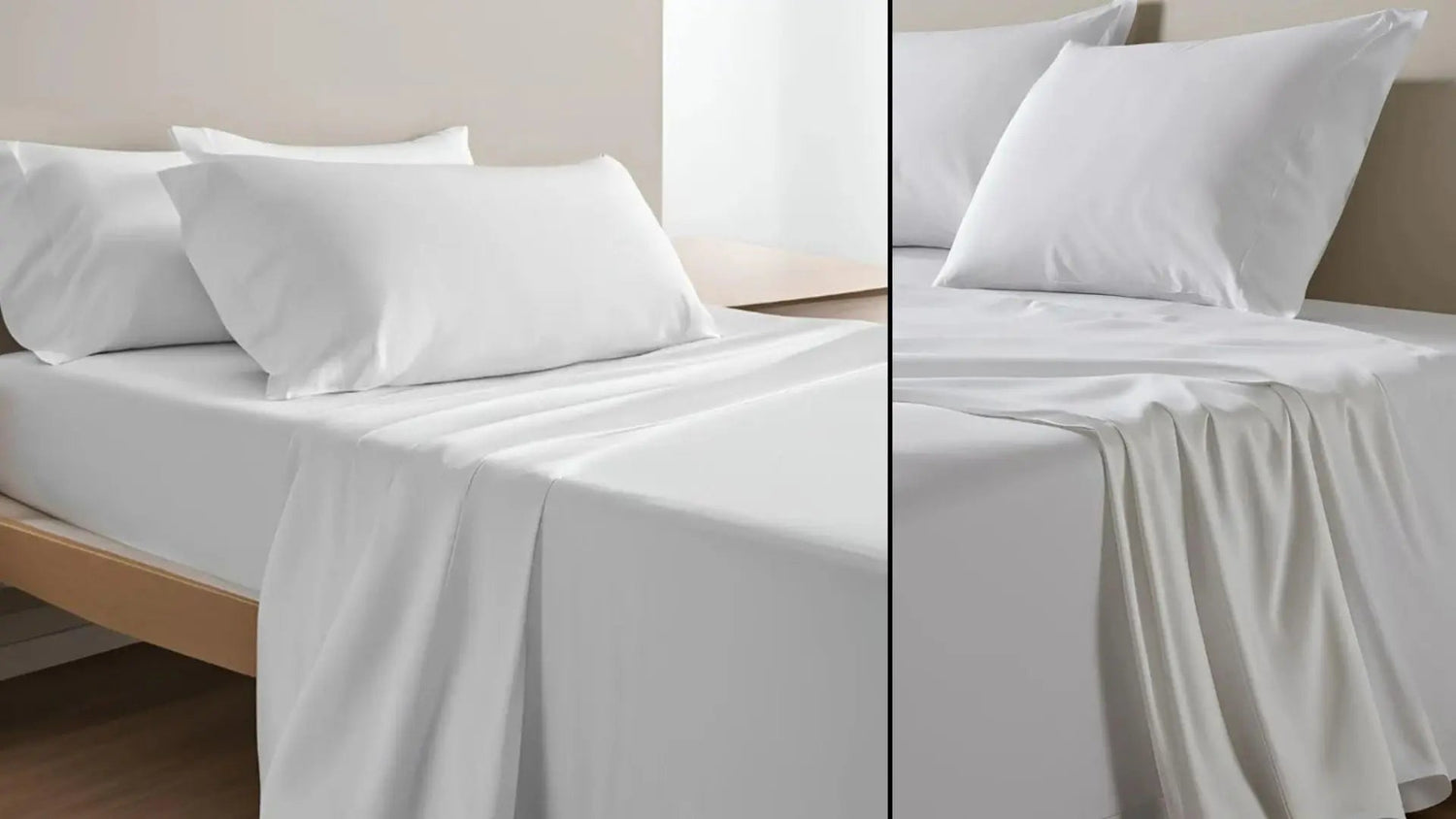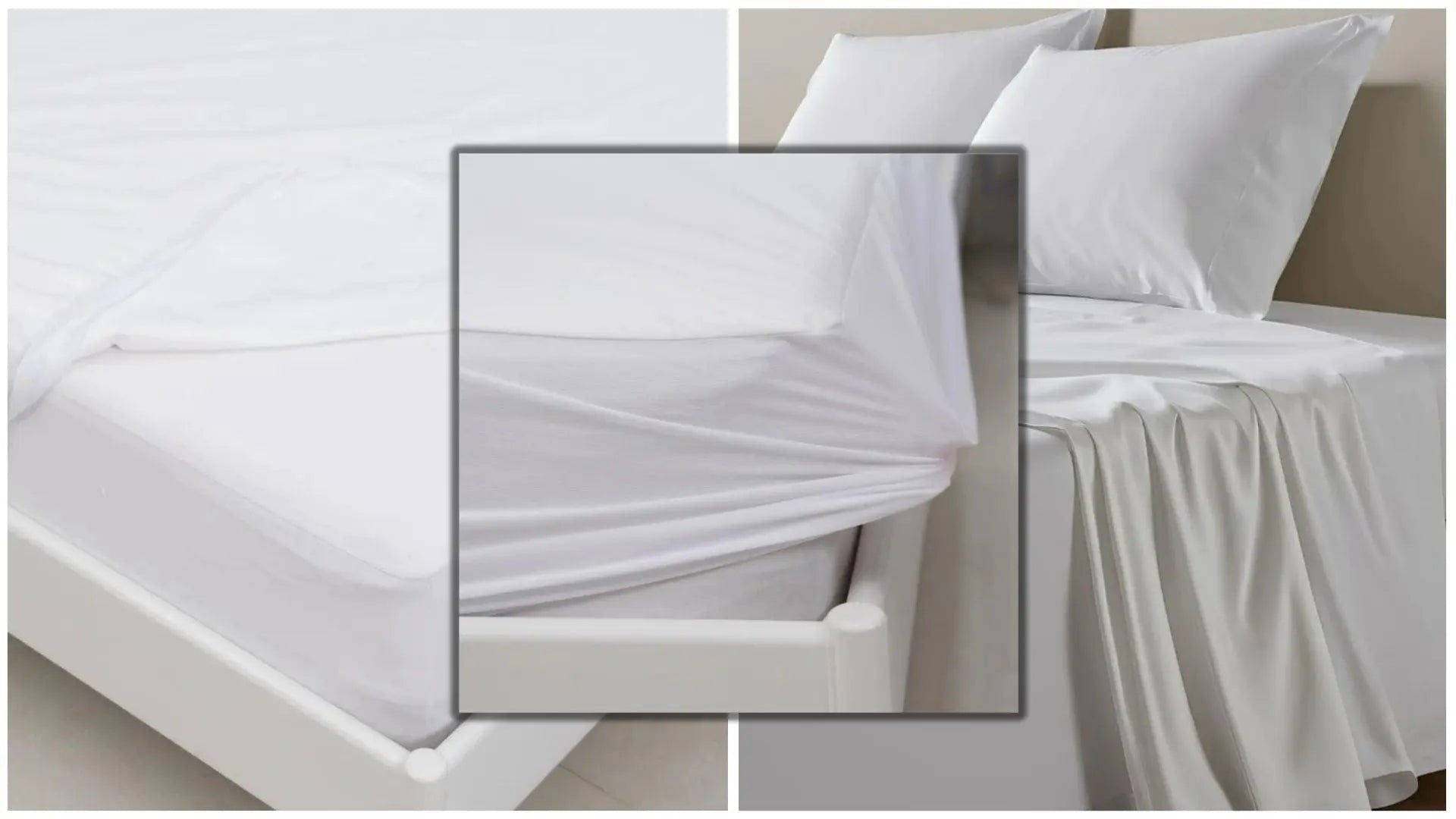Your mattress is more than just a place to sleep—it's a sanctuary for rest and rejuvenation. Protecting this essential investment requires the right mattress protector. But with countless options available, finding one that meets your needs can be overwhelming.
In this ultimate guide, we’ll provide detailed insights into choosing the perfect mattress protector, covering materials, types, special features, and tailored solutions for various needs.
Why You Need a Mattress Protector
1. Protecting Your Mattress Investment
Mattresses are a significant expense, often lasting 7–10 years with proper care.
A mattress protector helps preserve your mattress by acting as a protective barrier against damage caused by spills, dust, and sweat, keeping it in pristine condition for years to come.
2. Shielding Against Spills and Stains
Whether it’s accidental coffee spills, bedtime snacking mishaps, or children’s accidents, liquids can seep into your mattress, causing stubborn stains and lingering odors.
Waterproof mattress protectors provide a reliable layer of defense, ensuring your mattress remains dry and clean.
Did You Know?
Once a mattress absorbs moisture, it can develop mold, mildew, and bacterial growth, which not only damages the mattress but can also affect indoor air quality and your health.
Read here about how to wash a mattress protector.
3. Guarding Against Allergens and Dust Mites
Without a protector, mattresses can become a breeding ground for dust mites, pollen, and other allergens.
A high-quality mattress protector creates a barrier against these irritants, helping you maintain a cleaner and healthier sleep environment.
4. Enhancing Hygiene
Sweat, body oils, and dead skin cells accumulate over time, creating an unhygienic surface.
A washable mattress protector makes maintaining hygiene effortless by allowing you to clean it regularly, keeping your bed fresh and sanitary.
Fact:
A mattress protector can prevent up to 90% of allergens and dust mites from penetrating your mattress, improving overall sleep quality and reducing allergic reactions.
Types of Mattress Protectors
Understanding the different types of mattress protectors available is the first step in finding the right fit for your needs. Below, we break down the key categories and their benefits.

1. Waterproof vs. Non-Waterproof
-
Waterproof Protectors
- Provide a complete barrier against liquids.
- Ideal for children, pet owners, and individuals prone to spills.
- Often made with a noiseless waterproof layer to maintain comfort.
-
Example Use: If you’re a parent, a waterproof protector is essential for preventing spills and stains in kids’ rooms.
-
Non-Waterproof Protectors
- Focus on breathability and comfort without a waterproof layer.
- Ideal for adults who prioritize airflow and temperature regulation over liquid protection.
-
Pro Tip: Pair a non-waterproof protector with a mattress topper for added comfort and protection.
2. Fitted vs. Encasement
-
Fitted Mattress Protectors
- Resemble a fitted sheet, covering only the surface and sides of the mattress.
- Easy to remove and wash.
- Best for general use in adult bedrooms.
-
Encasement Mattress Protectors
- Fully enclose the mattress with a zippered design, offering 360° protection.
- Ideal for allergy sufferers or to safeguard against bed bugs.
-
Pro Tip: For maximum protection, choose an encasement protector made from breathable materials to prevent heat retention.
3. Materials
The material of your mattress protector directly impacts comfort, durability, and functionality. Below is a comparison of common materials and their benefits.
|
Material |
Benefits |
Best For |
|
Cotton |
Soft, breathable, and hypoallergenic. |
Everyday use; allergy sufferers. |
|
Bamboo |
Eco-friendly, cooling, and moisture-wicking. |
Hot sleepers; sustainable choices. |
|
Vinyl |
Waterproof and durable but less breathable. |
Budget-conscious buyers; heavy-duty use. |
|
Polyester |
Affordable and resistant to wear. |
Guest rooms; casual use. |
Recommended Product: Raia Home’s Mattress Protector offers a blend of waterproofing and breathable materials for ultimate comfort.
Key Factors to Consider When Choosing a Mattress Protector
1. Material and Comfort
The protector should feel soft and comfortable, enhancing your sleep experience. Soft, breathable fabrics like cotton and bamboo provide superior comfort, keeping you cool while wicking away moisture.
If affordability is a priority, polyester offers a durable and budget-friendly alternative, though it may lack the same level of breathability.
2. Waterproofing
A waterproof protector is essential if you’re concerned about spills, stains, or accidents. However, some waterproof layers can feel plasticky or noisy.
Choose a waterproof protector with noiseless technology to maintain a restful sleep.
3. Breathability
Especially in warm climates, choosing a breathable protector is crucial. Overheating can disrupt your sleep cycle, leading to discomfort and restlessness.
Bamboo-based protectors or those with cooling technology can help regulate temperature and keep you comfortable throughout the night.
4. Size and Fit
A protector should fit your mattress snugly without slipping or bunching. For thicker mattresses, look for deep-pocket designs that provide a secure fit.
If you have an adjustable bed, ensure the protector has elastic edges or stretchable fabric to accommodate movement.
5. Durability and Maintenance
Mattress protectors should withstand regular washing without deteriorating in quality.
Look for machine-washable options with reinforced stitching to ensure longevity. Avoid protectors that require dry cleaning, as this adds extra maintenance costs over time.
Pro Tip: Investing in a high-quality protector saves money in the long run by extending the life of your mattress.
Check out our premium pillow protectors we offer at Raia Home.
Mattress Protectors for Specific Needs
1. For Children
- Waterproof protectors prevent spills and nighttime accidents from reaching the mattress.
- Quick-dry and machine-washable designs make cleaning hassle-free.
- Hypoallergenic materials reduce the risk of skin irritation and allergies
2. For Allergy Sufferers
- Encasement protectors fully seal the mattress, blocking allergens like dust mites, pet dander, and pollen.
- Look for options certified by OEKO-TEX or similar organizations for chemical safety.
3. For Pet Owners
- Choose waterproof and scratch-resistant materials to guard against accidents and pet claws.
- Opt for washable protectors to maintain hygiene.
Recommended Product: The Raia Home Mattress Protector is perfect for households with pets or children, combining waterproofing and durability.
Maintenance and Longevity Tips
Proper care extends the lifespan of your mattress protector:
- Follow Washing Instructions: Use a gentle cycle and mild detergent. Avoid bleach or fabric softeners, which can damage waterproof layers.
- Dry Gently: Air-dry or use a low-heat dryer setting to prevent shrinkage.
- Rotate Usage: Swap protectors every few months to distribute wear evenly.
Common Myths About Mattress Protectors

Myth 1: "They’re uncomfortable."
Many people assume that mattress protectors make beds less comfortable by adding an extra layer that is stiff, crinkly, or makes noise when moving.
However, modern mattress protectors are designed using soft, noiseless materials that blend seamlessly with your mattress.
Advanced waterproofing technologies have eliminated the plastic-like texture found in older models, allowing you to enjoy protection without compromising on comfort.
Myth 2: "They ruin mattress feel."
A common misconception is that using a mattress protector alters the plushness or firmness of the bed, making it feel unnatural.
High-quality protectors are made to preserve the natural feel of your mattress while offering an additional protective layer.
Many premium protectors are thin, lightweight, and designed to enhance rather than diminish the mattress's comfort and support.
Myth 3: "They make you sweat."
Some older mattress protectors, especially those with vinyl or plastic layers, were notorious for trapping heat and causing discomfort.
However, newer protectors feature breathable, moisture-wicking fabrics like bamboo and cotton, which help regulate temperature and prevent overheating, keeping you cool and dry throughout the night.
FAQs About Mattress Protectors
1. Can a mattress protector prevent bed bugs?
Yes! Encasement protectors with a zippered design block bed bugs from entering or exiting the mattress. These protectors fully enclose the mattress, creating a secure, impenetrable barrier that keeps your sleeping space free from infestations.
2. How often should I replace my mattress protector?
A high-quality mattress protector can last 1–2 years with regular use. However, it should be replaced sooner if you notice tears, thinning fabric, or a loss of waterproofing.
3. What’s the difference between a mattress protector and a mattress topper?
- A mattress protector shields against allergens, spills, and dust.
- A mattress topper enhances comfort and support but doesn’t offer full protection.
4. Do mattress protectors make you sweat?
Not if you choose the right materials! Opt for breathable, moisture-wicking options like bamboo or cotton. Avoid protectors with vinyl or plastic layers, as these can trap heat and lead to discomfort.
Conclusion
Choosing the right mattress protector is a small step that makes a big difference in maintaining your bed’s hygiene, comfort, and longevity. From waterproof options for children and pets to allergen-proof encasements for sensitive sleepers, there’s a perfect protector for every need.
Explore Raia Home’s Mattress Protector collection to find the ideal blend of protection and luxury for your home.






Leave a comment
This site is protected by hCaptcha and the hCaptcha Privacy Policy and Terms of Service apply.